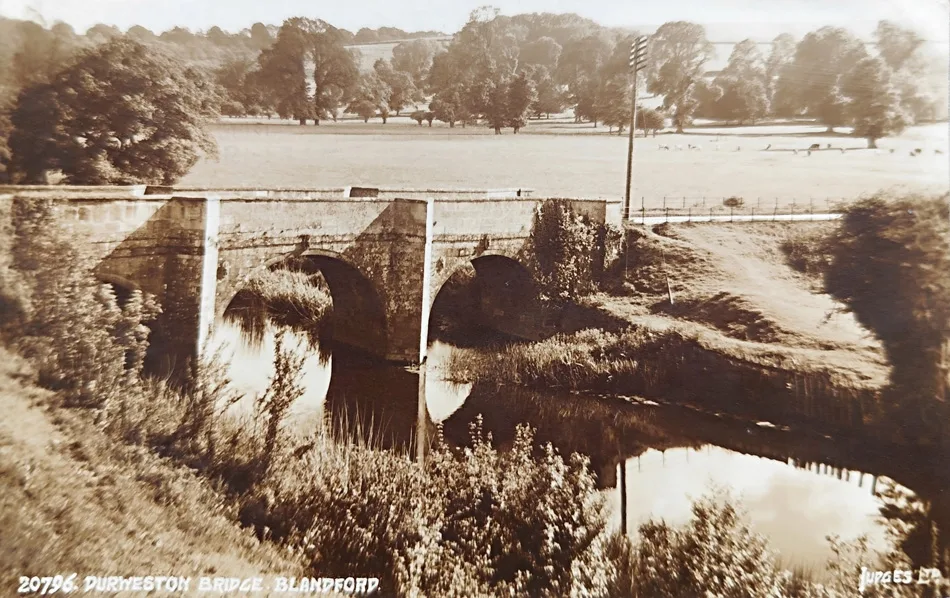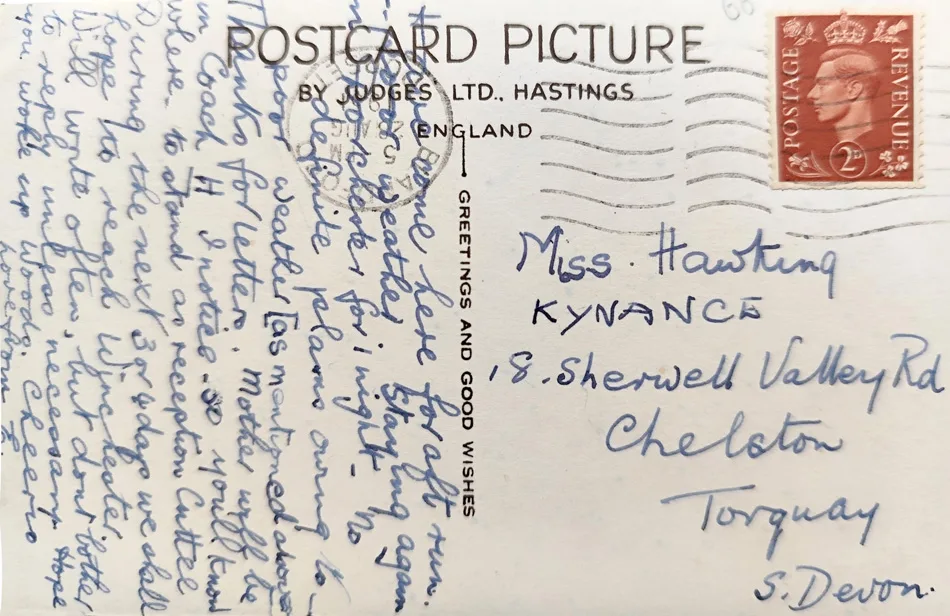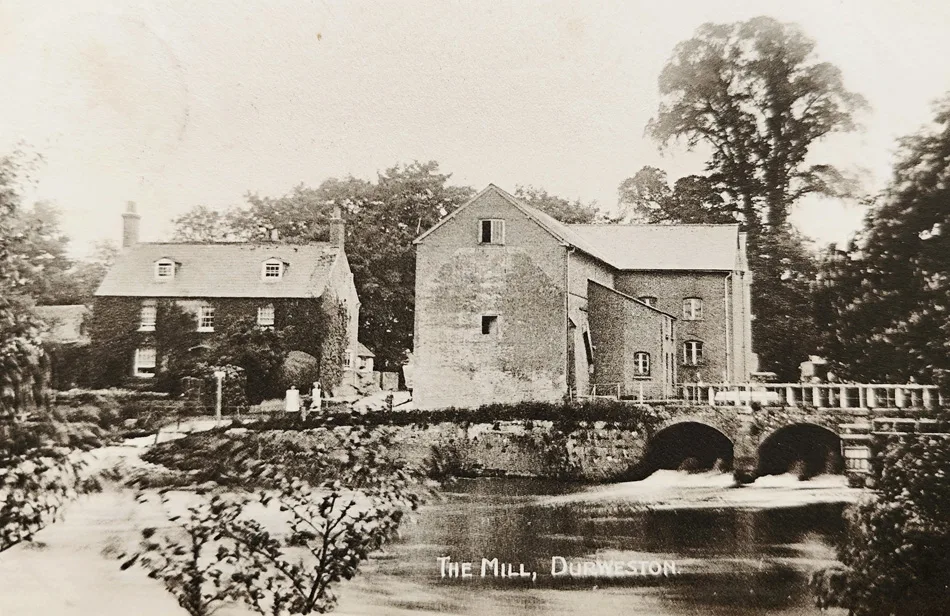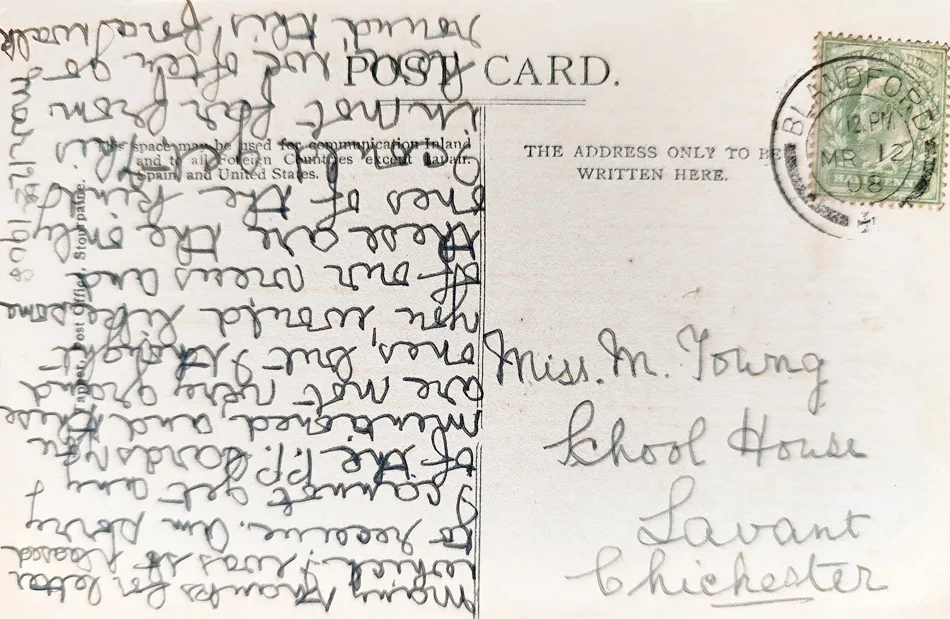This month Barry Cuff has chosen two holiday postcards from more than a century ago
Durweston Bridge was built in 1795 for Henry Portman to divert the main road away from his Bryanston estate. Replacing a ford, it was damaged by traffic from its earliest days: a newspaper report from 1837 describes the first incident – two racing riders returning from Blandford Fair took the turn too fast, one horse hit the bridge and caused both animals (and their riders) to be catapulted into the river. In 1887, a brewers’ carthorse bolted coming down Stourpaine Hill, crashing into the bridge and throwing the driver into the river.
In 1929 came the well-known incident of the lorry which, when its gearing snapped as it turned onto the bridge, crashed through the wall and hung precariously over the edge. This led Blandford Rural Council to draw Dorset County Council’s attention to the narrowness of Durweston Bridge, stating it was ‘inadequate for present-day traffic’. The minutes of the meeting show the County Council resolved that the question of widening be considered at a later date … the bridge has never been widened, and in 1955 it was designated as a Grade II* Listed Building.


Few spots on the Stour are more picturesque than Durweston Mill, with its large millpond surrounded on two sides by trees and bushes and set against a background of white-painted hatches and a three-storey mill building tastefully converted to four large apartments.
The millpond used to be even bigger but decades of silting-up has now created an island on its eastern side. The drop from millstream to pond is reputedly the deepest on the Stour.
While the Mill House across the road is Georgian and now Grade II Listed, the former mill building dates from about 1932, when fire destroyed its own Georgian predecessor. As well as a flour mill, it also produced porridge oats during the war and had a spell as an animal feed factory before closing for good in 1969. It later became a boarding house for girls from Croft House School, Shillingstone. The ground floor has been flooded four times since the mill closed, most recently on Christmas Eve 2013. A modern view of the postcard scene can be found in the current AirBnB listing for a holiday apartment at the property.
When this postcard was sent to Lavant, West Sussex, in 1908, the mill was still a flourishing business. The Western Gazette carried an advertisment that year for ‘Stone made STANDARD and Brown FLOURS, wholemeal, etc. Manufactured from choice wheats.-f. Rickman, Durweston Mills, Blandford.’


Many thanks for letter which I was so pleased to receive. Am sorry I cannot get any of the PP cards of the mentioned and these are not very grand ones, but I thought you would like some of our views and these are the only ones of the kind I could get. This is not far from here, we often go round this for a walk
History of Durweston Mill taken from the third part of Roger Guttridge’s series on the Stour for Dorset Life.


